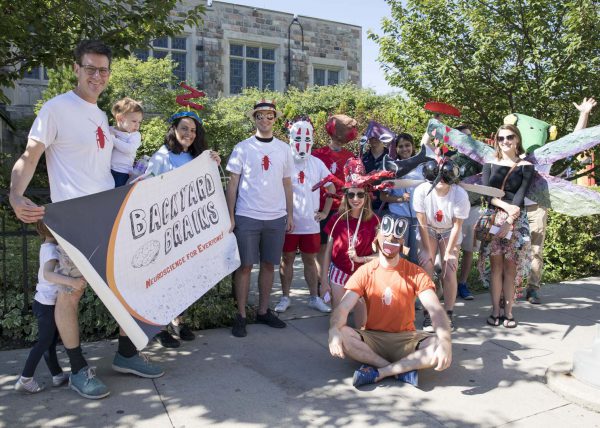-
 FellowshipThough it feels like just last week I landed here in Michigan, it seems that it’s almost the time for me to go back home. Though my work with the project here is wrapping up, there’s still so much to be done, but I’m confident that I’m leaving behind a good framework. These past few weeks […]
FellowshipThough it feels like just last week I landed here in Michigan, it seems that it’s almost the time for me to go back home. Though my work with the project here is wrapping up, there’s still so much to be done, but I’m confident that I’m leaving behind a good framework. These past few weeks […] -
 FellowshipHey everybody, it’s your favourite Neurorobot project once again, back with more exciting updates! I went to my first knitting lesson this week at a lovely local cafe called Literati, and attended the Ann Arbor Fourth of July parade dressed as a giant eyeball with keyboards on my arms (I meant to dress as “computer […]
FellowshipHey everybody, it’s your favourite Neurorobot project once again, back with more exciting updates! I went to my first knitting lesson this week at a lovely local cafe called Literati, and attended the Ann Arbor Fourth of July parade dressed as a giant eyeball with keyboards on my arms (I meant to dress as “computer […] -
 EducationOver 11 sunny Ann Arbor weeks, our research fellows worked hard to answer their research questions. They developed novel methodologies, programmed complex computer vision and data processing systems, and compiled their experimental data for poster, and perhaps even journal, publication. But, alas and alack… all good things must come to an end. Fortunately, in research, […]
EducationOver 11 sunny Ann Arbor weeks, our research fellows worked hard to answer their research questions. They developed novel methodologies, programmed complex computer vision and data processing systems, and compiled their experimental data for poster, and perhaps even journal, publication. But, alas and alack… all good things must come to an end. Fortunately, in research, […] -
 EducationHello again my faithful viewers, and thanks for tuning in for another exciting octopus themed blog post. As always I am your host Ilya Chugunov, but today I’ve come with sad news; all good things must come to an end, and this marks the end of my summer research here with Backyard Brains. Now’s a […]
EducationHello again my faithful viewers, and thanks for tuning in for another exciting octopus themed blog post. As always I am your host Ilya Chugunov, but today I’ve come with sad news; all good things must come to an end, and this marks the end of my summer research here with Backyard Brains. Now’s a […] -
 EducationToday our Summer Research Fellows “snuck in” and presented their summer work at a University of Michigan, Undergraduate Research Opportunity Program (UROP) symposium! Over the two sessions our fellows presented their work and rigs to judges, other students, to university faculty, and community members. Some of the fellows are seasoned poster designers, but others had […]
EducationToday our Summer Research Fellows “snuck in” and presented their summer work at a University of Michigan, Undergraduate Research Opportunity Program (UROP) symposium! Over the two sessions our fellows presented their work and rigs to judges, other students, to university faculty, and community members. Some of the fellows are seasoned poster designers, but others had […] -
 EducationHi everyone! My name is Christy and I will be a junior at Rice University this coming Fall. I am so excited and grateful to be part of the Backyard Brains fellowship program for this summer and will be studying longfin inshore squid hatchlings for my research project. At school, I am majoring in Computer Science […]
EducationHi everyone! My name is Christy and I will be a junior at Rice University this coming Fall. I am so excited and grateful to be part of the Backyard Brains fellowship program for this summer and will be studying longfin inshore squid hatchlings for my research project. At school, I am majoring in Computer Science […]